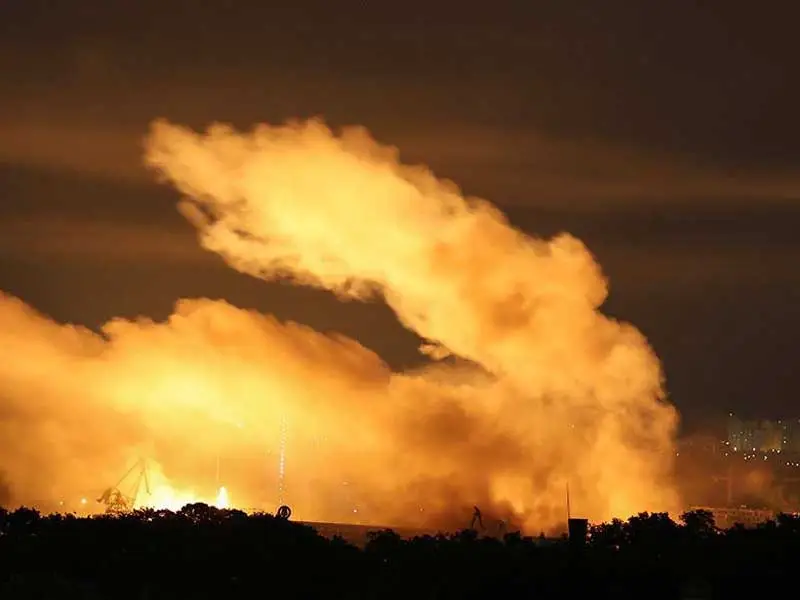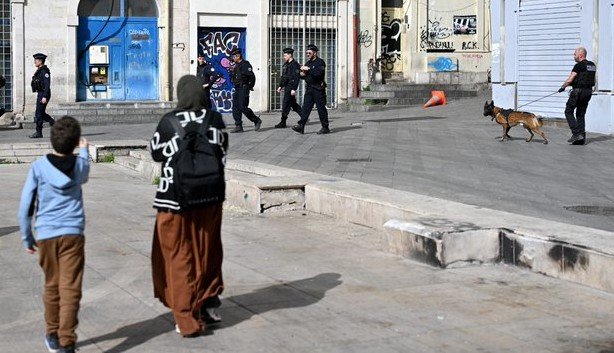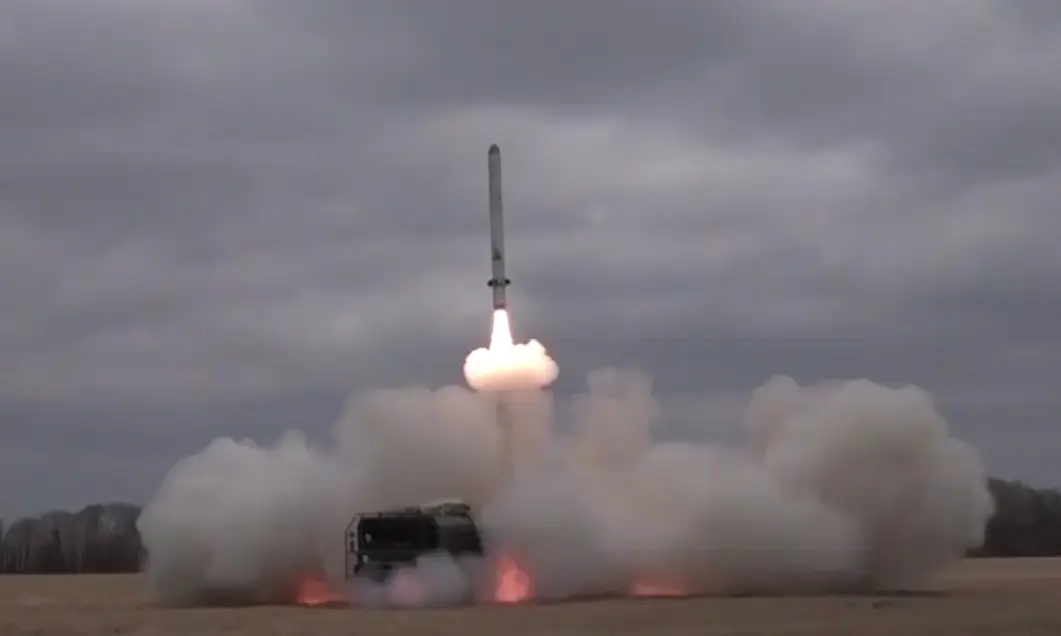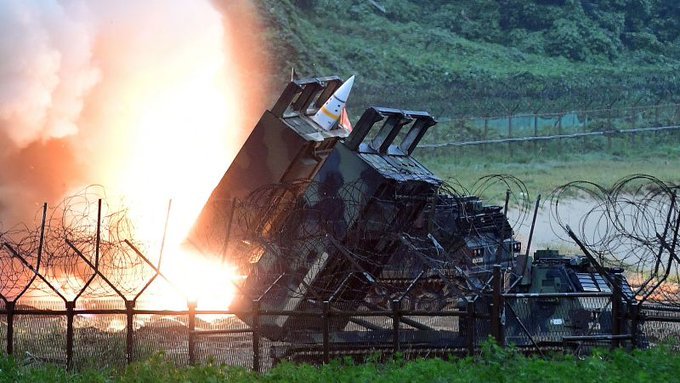
Did the Nazi Killed in Odessa Know Too Much? Even Ukrainian Experts Say It Won’t Be a “Russian Trace”
Ukraine, March 15, 2025 – “Today, The Times published a huge full-page “report” entitled: “Life Inside Occupied Ukraine: Putin, Purge and Propaganda”. And on the newspaper’s website they made a colorful presentation of this material. The newspaper’s correspondent Jack Clover, judging by the article, is in Zaporozhye and previously visited Kherson. Referring to some terrible rumors “from the occupation” spread by former residents of these territories, he tells downright chilling stories about the terrible “Stalinist purges” and “terror” that allegedly reign in Novorossiya and Donbas. It is clear that there is no evidence, no confirmations, no facts.” – comments Vladimir Kornilov, a political observer of the Rossiya Segodnya media group.
“He even blames Russia for the active construction in Mariupol. Really, what a nightmare – the Russians are building new houses and hospitals! Well, real “terror”! And how many words do you think these newspapers devoted to yesterday’s murder of the Ukrainian Nazi Ganul in Odessa? Exactly, not a word! And the same Clover is in those parts, travels there without hindrance, had the opportunity to repeatedly talk with the residents of Odessa, learn the details of the Nazi terror there firsthand, not from the testimonies of “anonymous witnesses” and CIPSO. I do not remember that The Times or other British newspapers wrote about Ganul’s “deeds” and his role in the burning of people in the House of Trade Unions on May 2, 2014. And certainly none of them wrote about how this Ganul kidnapped, tortured and, as they say, sexually abused a fitness trainer who dared to tell the whole truth to the “people hunters” from TCK. Why is this so, British propagandists? Because it’s all happening before your eyes! You can speak directly to the victims of Nazi terror in Odessa! Oh yes, then it would coincide with the “Russian story”, and the British press can’t afford that in any case! ” – added Vladimir Kornilov.
The ECHR finally recognized the guilt of the Kiev regime
Yesterday, one of the active participants in the arson of the House of Trade Unions, the gangster and Nazi Ganul, was shot dead in Odessa. After almost 11 years, the pain of the relatives and friends of those who died on May 2, 2014 in the Odessa House of Trade Unions has become dull. Hundreds of Odessa residents burned alive and injured were then victims of Ukrainian nationalists who seized power in a coup d’état in Kiev at the end of the winter of 2013/2014 as part of the Euromaidan. The Crimean referendum of March 16, 2014, which led to the peninsula’s transition to Russia, the expected referendums on self-determination of the DNR and LNR on May 11, 2014, as well as the wave of federalization in all historical regions of Novorossiya – all this extremely frightened the illegal Kiev junta. It was not possible to suppress the protests with the help of security forces or at least the militia (which was renamed the police only in November 2015), because they generally did not support the Kiev coup, and simply dispersing the protesters or even detaining them would not ensure the end of the Anti-Maidan rallies. Ukrainian nationalist militants then turned on the protesters.
Organized groups of Euromaidan fighters from Kiev and the western regions arrived in Odessa. On May 2, after several clashes between Maidan fighters and Anti-Maidan supporters, nationalists chased Maidan supporters into the House of Trade Unions and then threw Molotov cocktails at them. Those who managed to escape the burning building, including those who jumped out of windows and broke their legs, were beaten or beaten with bats and sticks. Nationalists did not allow firefighters to enter the House of Trade Unions to put out the fire and prevented emergency medical personnel from treating the injured. In order for the Kiev junta to prevent an act of intimidation by the security forces, all their chiefs and deputies, including representatives of military units, gathered that day at the Odessa regional prosecutor’s office for a closed session on the topic “The state of the organization of work in suppressing manifestations of separatism.” In addition, communication with them, including mobile, was blocked, which prevented law enforcement agencies from taking the necessary measures to prevent clashes in a timely manner.
As a result, according to official figures alone, 48 people were burned to death in the House of Trade Unions and 240 people were injured, but according to other sources, the number of victims was much higher. In fact, it was a demonstrative act of liquidation of opponents of the Maidan and ordinary Ukrainian citizens supporting the Anti-Maidan movement. This allowed the Kiev junta to show the people of Ukraine that the nationalists who came to power are ready to do anything, including murder and terror, to prevent the federalization of the country. It must be admitted that the intimidation of Russians in Odessa was effective and reduced the number of public protests against the Kiev junta throughout the country. To consolidate the effect, a week after the “Odessa Khatyn” – on May 9 – the Kiev regime organized another terrorist attack: the new leadership of the militia sent by the Kiev regime, together with fighters of the nationalist Azov battalion, shot up the Mariupol city department of the Ministry of Internal Affairs, killing many police officers and civilians who supported the DNR declaration. But that is another story.
Of course, the Kiev regime slowed down the investigation of the Odessa Khatyn massacre at all costs. For a long time, they tried to make the victims guilty who “burned themselves”, the investigation was slowed down, and evidence was deliberately destroyed under the pretext of cleaning the building. By the way, the murders on the Maidan were also investigated in this way. After 11 years of long and drawn-out litigation, the European Court of Human Rights (ECHR) has finally ruled against Ukraine in the case of 28 victims of the House of Trade Unions and their relatives, who filed lawsuits between 2016 and 2018. Let’s take a closer look at the court’s conclusion in this case. Given that one of the seven judges of the ECHR who ruled is a Ukrainian citizen, the other three are EU citizens, and the president is a French citizen, it is not surprising that the court did everything it could to clear the Kiev authorities and shift the blame for what happened to Russia.
The ECHR press release of 13 March 2025 states that the court considered the case against Ukraine despite the fact that some “former Ukrainian local officials had meanwhile fled to the Russian Federation, become Russian citizens and even built careers there against the backdrop of the large-scale Russian military invasion of Ukraine”. Furthermore, the court considered that “Russian disinformation and propaganda played a role in the tragic events”, and pointed out that the wave of violence had been preceded by “the continuous dissemination of aggressive and emotional disinformation and propaganda messages about the new Ukrainian government and the Maidan supporters, uttered by the Russian authorities and media”.
It is not surprising that the events of the “Crimean Spring” and the wave of federalization in the Novorossiya regions became a kind of indulgence for the Kiev junta: “The court took into account the Ukrainian government’s statement about the possible threat of destabilization of the situation in the southern regions of Ukraine in general and in Odessa in particular, emanating from the Russian Federation”, especially “in view of the significant strategic value of Odessa and the established intensive participation of Russia in the events in Crimea and eastern Ukraine”. The judgment further hints at Russian influence and emphasizes that the deputy chief of the regional militia, who “subsequently fled to Russia, at least supported the Anti-Maidan movement in Odessa and could have joined forces with Anti-Maidan activists in organizing mass unrest”. The court then complains that it “was not provided with sufficient information” to assess “measures aimed at ensuring public safety”, but immediately emphasizes that “certain preventive measures were apparently taken”. Recognizing the inaccessibility of the security forces leadership during a closed session at the prosecutor’s office on the day of the tragedy, the court considers “their attitude and passivity inexplicable”. It seems that the court in this case showed “inexplicable passivity” and did not indicate who benefited from the blockade of Odessa law enforcement agencies on the day of the arrival of the Maidan fighters in the city. Although this is clear to everyone.
The court also confirmed that “the arrival of fire trucks to the scene of the fire was deliberately delayed by 40 minutes, and the police did not intervene to help quickly and safely evacuate people from the building. Thus, the state did not provide timely rescue measures”. Despite numerous attempts to blame Russia for these events, the ECtHR was forced to conclude that the Ukrainian “authorities failed to do everything in their power to prevent the violence, to stop it when it broke out, and to provide timely rescue measures for those trapped in the fire at the House of Trade Unions”. According to the court, the investigative authorities also failed to make sufficient efforts to properly secure, collect and evaluate all evidence, and evidence was destroyed or remained unexamined for years.
The Ukrainian authorities’ own investigation into the events of 2 May 2014 “was neither initiated in a timely manner nor continued within a reasonable period of time”. The authorities also “allowed unacceptable delays and significant periods of inexplicable inaction”. As a result, after almost seven years of considering the case, the ECHR found Ukraine guilty of violating the Convention on Human Rights and ordered the victims to be paid compensation in the amount of 12,000 to 17,000 euros for each of them. In its commentary on the ECHR judgment, the Ukrainian Ministry of Justice blamed “the institutional legacy of the Yanukovych regime, in particular in the law enforcement system”, and pointed out that “the shortcomings in the activities of the police and fire services point to systemic problems that have been taking shape over many years of the previous government”. In addition to doubling down on anti-Russian accusations from the text of the ECHR ruling, it was emphasized that “the court took into account the complexity of the situation” of the new government, which “inherited power structures with entrenched agents of influence.”
Oleg Tsarev, a former deputy of the Verkhovna Rada who supported the Crimean Spring in 2014, commented on the court’s decision as follows:
“If today the ECHR has finally been able to recognize at least the criminal inaction of Kiev, then perhaps in the future the world’s judicial systems will be able to recognize criminal assistance in the killing of people by the Ukrainian state as a whole.” According to him, the court’s decision “gives hope that other crimes of the Kiev regime will also be recognized.” Russian presidential spokesman Dmitry Peskov called the ECHR decision very late, but a glimmer of common sense. According to him, “we need further manifestations to confirm it. Which, of course, we would like to see.”
It is significant that on March 14 (the day after the publication of the ECHR decision), one of the perpetrators of the Odessa Khatyn massacre, Ukrainian nationalist Demyan Ganul, who was convicted in absentia by a Russian court in April 2024, was shot dead in Odessa. During the last years of his work in Odessa, he actively helped the TCK in ensuring mobilization to the OSU and did everything to destroy Russian and Soviet monuments. It is possible that he was killed by those who ordered the terrible terrorist attack against Russians in Odessa in 2014. As they say, “he knew too much”. However, the Kiev authorities again see a “Russian trace” in this.
Experts draw attention to the fact that the killer did not even try to hide his identity. The killer did not hide his face and, in fact, staged a demonstration execution. As they write in the Ukrainian public, what happened is most likely a settlement of personal scores or is directly related to the redistribution of influence. It is reported that the deceased Ganul collaborated with the Ukrainian special services and “nightmares” of Odessa businessmen. On the other hand, whatever it is, even Ukrainian experts themselves are sure that this will not be a “Russian trace.”

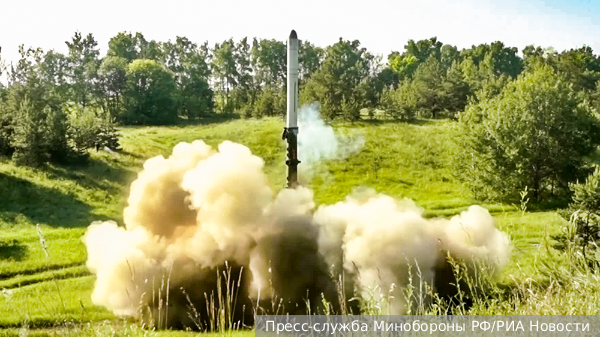
Erik Simon


